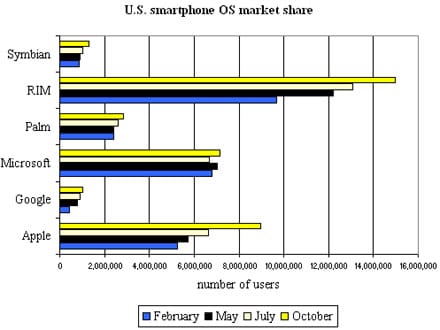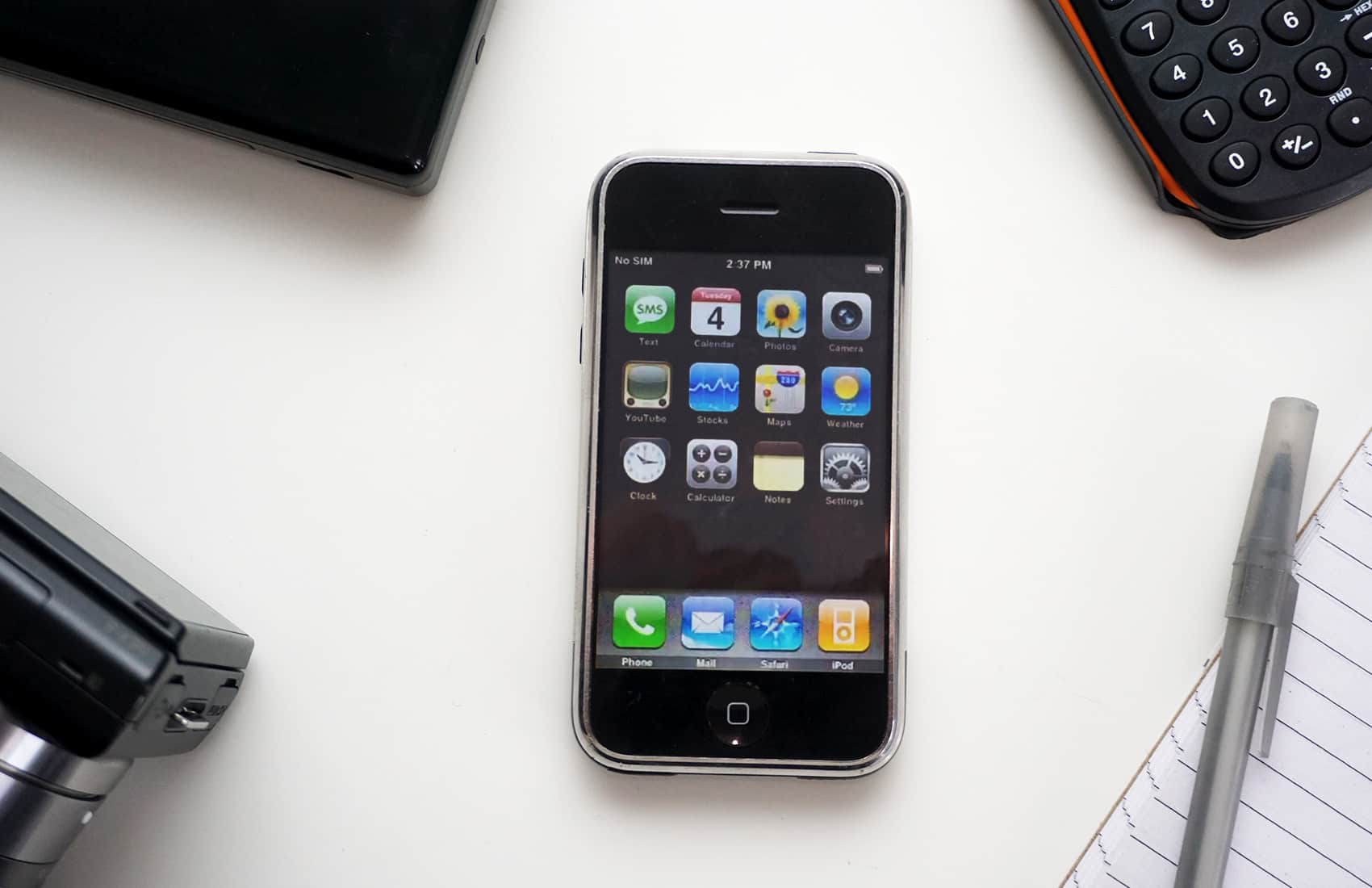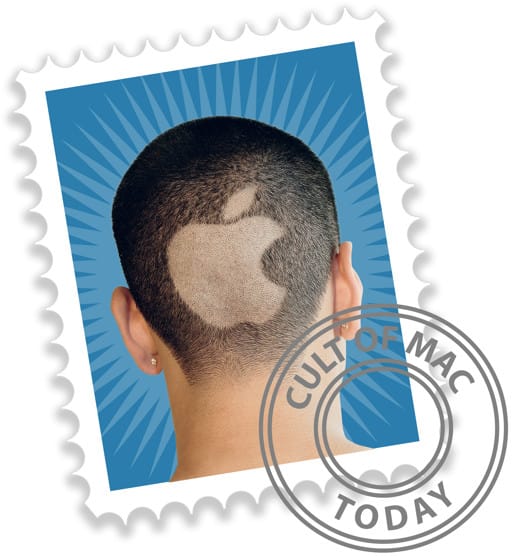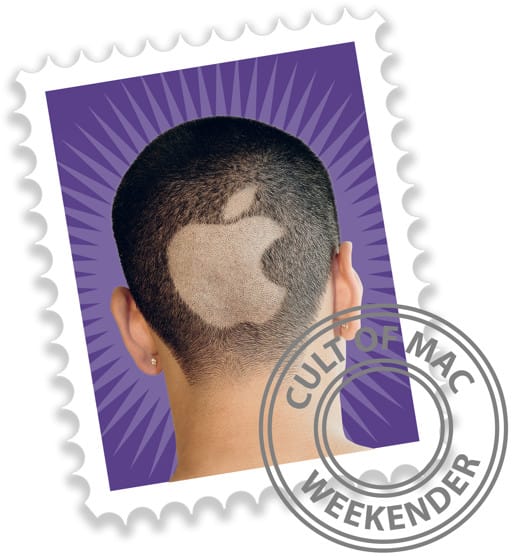 December 17, 2009: Apple finally triumphs over longtime rival Microsoft … on mobile operating systems market share. New data shows that iPhone OS surpasses Windows Mobile in the United States for the first time.
December 17, 2009: Apple finally triumphs over longtime rival Microsoft … on mobile operating systems market share. New data shows that iPhone OS surpasses Windows Mobile in the United States for the first time.
With roughly 36 million Americans owning smartphones, a quarter of them run Apple’s mobile operating system, according to figures released by research firm Comscore.
Mobile phones mark a turning point in tech
The undisputed leader at the time was Research in Motion’s BlackBerry operating system, found on 40% of U.S. handsets. Apple came in second. Microsoft took third, followed by Palm OS, then Symbian and (in last position) Google’s Android operating system.
In some ways, these adoption figures represented a turning point in tech. At the time, Microsoft led Apple in terms of market valuation, although clearly things were changing fast. Microsoft’s Steve Ballmer laughed at the iPhone, which he slated as a non-serious competitor to his company’s Windows Mobile.
But by the following May, Apple overtook Microsoft in market capitalization, surpassing the tech giant that dominated Cupertino during the previous decade. And by the end of 2010, Microsoft dropped its Windows Mobile operating system in favor of Windows Phone OS.
The long list of rival mobile operating systems from 2009 also sheds light on how much things changed in the years since. BlackBerry, then the industry leader, has become an afterthought. Palm OS and Symbian have been discontinued. Aside from iOS, the only other mobile operating system to flourish is Android.
Mobile operating systems evolve

Photo: ComScore
Figures from November 2023 show that current U.S. smartphone operating system adoption breaks down like this: iOS runs on 58% of devices and Android on 41%. Android does better internationally, claiming 70% of the market versus Apple’s 29%, due to the widespread adoption of less-expensive smartphones around the world. Everywhere, competitors to iOS and Android remain negligible slivers that represent less than 1% of the market.
Things sure have changed in the past decade or so.
Which mobile operating system and handset were you using back in December 2009? Let us know in the comments below.


